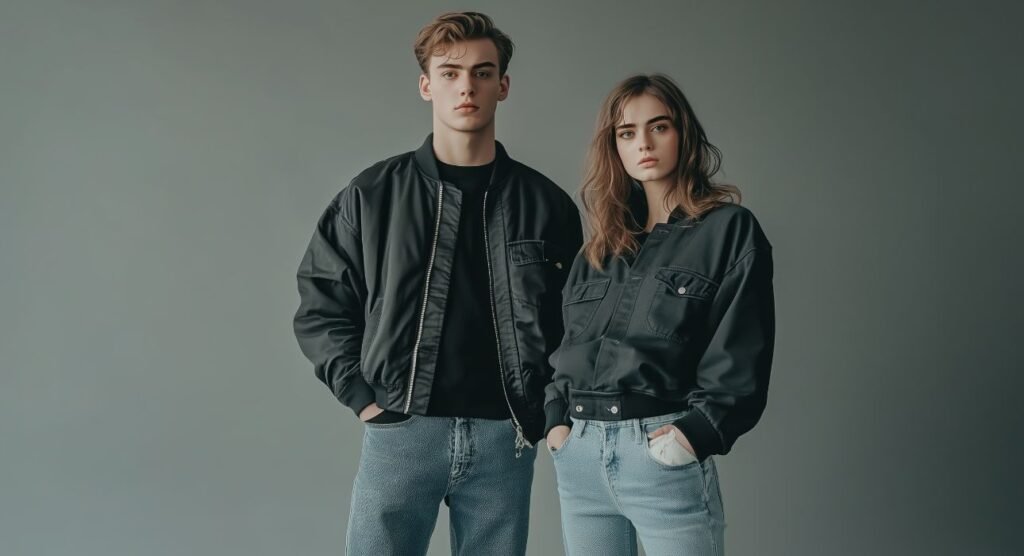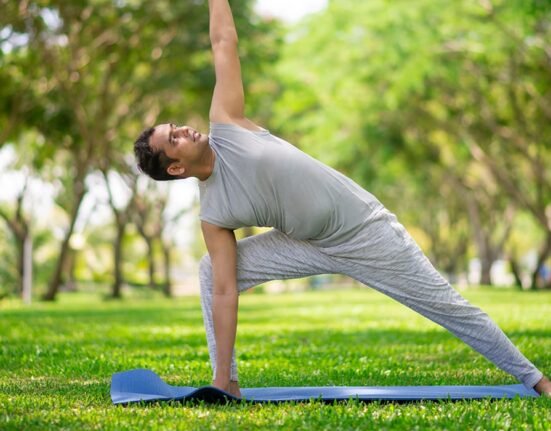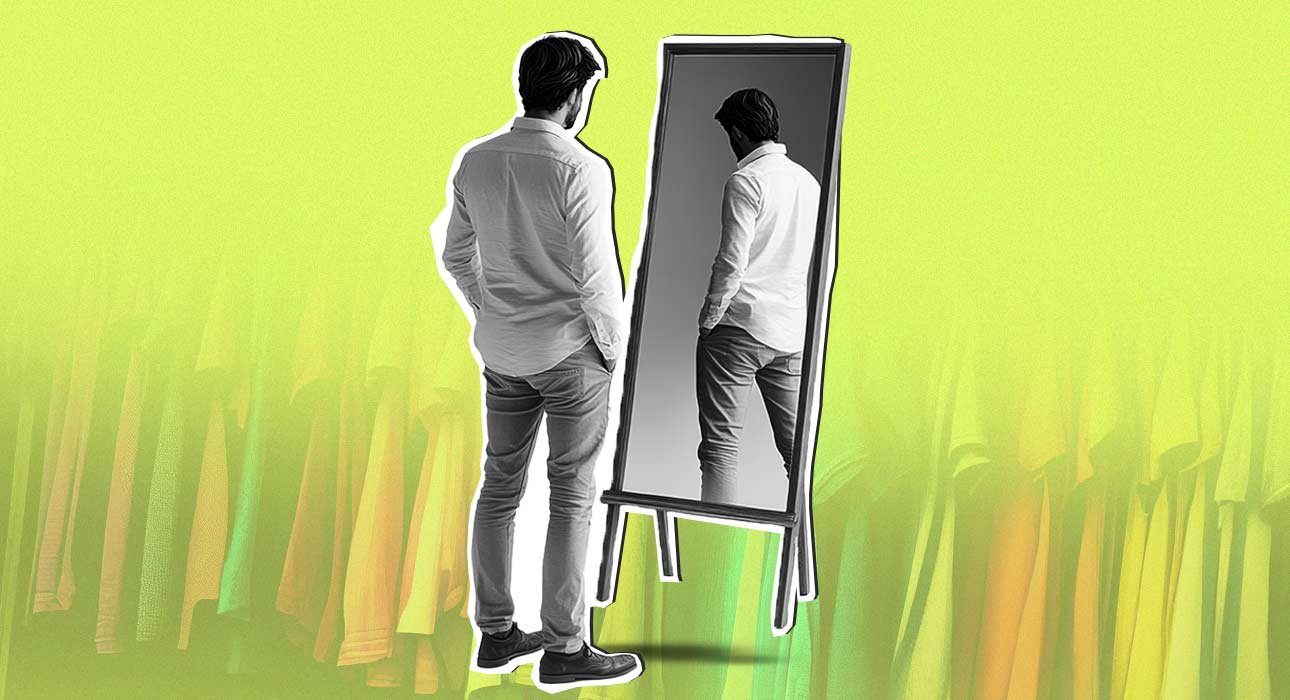Clothing is more than fabric; it’s an instant, visible message about identity, status, gender, competence, and membership. Psychologists have called this the “symbolic meaning” of clothing and how changing clothes can instantly transform us into different people. Landmark experiments on enclothed cognition showed that wearing an item with a particular meaning connoted can shift attention and task performance; e.g., a “doctor’s coat” (v. the same thing labelled as a painter’s coat) enhanced sustained attention on tasks in a lab.
This isn’t magic—symbolic priming: clothing evokes concepts (competence, professionalism, authority) that in turn cause alignment of cognition and self-concept. Although not all clothing has such potent symbolism, day-to-day decisions (dressy vs. casual, tight vs. loose, loud vs. subdued) can influence self-confidence and self-evaluation in quantifiable measures. A second, supporting process is self-objectification.
Within a body-judged culture where appearance determines so much judgment, individuals can internalise the observer’s eye, keeping watch on their look and shape from the outside. That inner surveillance is linked to body shame and eating disorders when bodies are more “on display” through dressing. The original objectification theory was initially proposed to account for women’s daily lives, but adaptations now reach men and gender-diverse populations, in which standards (thinness for women, muscularity for men) are imposed by media and advertising. Clothing that calls attention to, pressures against, or constantly reminds one of those ideals can increase alertness and reduce self-esteem.
Read More: Exploring the Impact of Clothing Choices on Emotional Well-being
Gendered Ideals, Gendered Effects of Women and Girls
Women of all ages often find themselves in a double bind: dress as a tool of expressiveness can affirm identity and agency, but body-revealing or “idealised” fashion also enhances self-monitoring. Experimental and survey studies consistently show that viewing idealised appearance standards—standards in fashion and fitness photos—is correlated with lower body satisfaction and worse mood among women.
Read More: The Psychological Effects of Living in a Surveillance Society
Social Media makes it Worse
In 2019, a meta-analysis found small-to-moderate correlations between social media exposure and disruption of body image. The process typically follows social comparison (seeing other people’s photo-manipulated bodies), which clothing and styling cues make salient. Clothes can assist. Every day dressing studies in women indicate that clothing selected based on psychological comfort, authenticity, and fit (as opposed to concealment or following trends) is associated with greater body appreciation. In mixed-methods and qualitative research, women describe employing colour, silhouette, and texture to “dress the self,” protecting against pressure for appearance; the same research indicates the danger of employing clothing as largely camouflage, often upholding self-criticism.
Read More: Social comparison in the age of Social media
Boys and Men: Thin-Ideal to “Drive for Muscularity”
Men are not excluded—far from it. Contemporary ideals of masculinity also prize leanness over muscular bulk, creating a new kind of exposure effect. Reviews demonstrate how appearance-driven media enhance men’s drive for muscularity and body dissatisfaction. Apparel interacts with this in two ways. First, compression and tight dress (for example, fitted tees, sportswear) can amplify surveillance of “deficits,” and second, fashion imagery centred on hyper-muscular men creates a norm that most men calibrate themselves against.
Men will indicate lower “body appreciation” within some age groups than women, partly due to the muscular ideal being specific and strict. Gender-diverse and nonbinary people: dysphoria, euphoria, and fashion as affirmation.
Fashion’s Role in Gender Identity

Clothes that express and affirm gender identity can build “gender euphoria” and increased body appreciation, but limited access, sizing discrepancies, or safety concerns surrounding presentation can damage self-esteem. Current qualitative studies with nonbinary adults with positive body image highlighted how adaptive, identity-congruent fashioning—often across traditional gender boundaries—spares wellbeing. The same participants communicated unease when shopping environments reiterate binary accommodations and silhouettes.
How Different Clothing aspects Change Self-Esteem and Body image
1. Formal vs. Informal: Perceived Power, Distance, and Big-Picture Thinking
Several studies indicate that dressing more formally than usual will increase feelings of power and induce more abstract, high-level thinking—effects that will boost confidence in testing environments (interviews, presentations). Even though these are cognitive impacts, they spill over into self-esteem because people rate their own performance more positively when they feel agentic and “in role.” The impact relies on meaning: businesswear sends signals of status and formality in most environments, so it shifts mindset through social cues; where formality carries different meanings, outcomes will vary. Fit and comfort: the “second skin” that sets your benchmark.
Read More: How is Perfectionism affecting your Self-Esteem and Life Satisfaction?
2. Fit is the Hidden Determinant
Ill-fitting clothes encourage focus on “problem areas,” incite tugging and checking, and lower self-esteem—results replicated in experiments on size labelling and size availability. Conversely, well-fitting clothes predict comfort, greater mobility, and less appearance concern. Qualitative and experimental research on clothing size finds that constrictive size ranges and fluctuating labels (vanity or “off” grading) can impair mood and self-concept, especially for women socialised to pay attention to size labels.
3. Reveal vs. Conceal: Balancing Self-Expression with Self-Surveillance
More revealing forms can provide feelings of boldness and self-expression, but also increase self-monitoring in spaces where the body is scrutinised. Objectification theory would predict that clothing highlighting body areas that map to cultural ideals (waist/hip ratio, chest, glutes) will increase surveillance and body shame when one is afraid of failing to meet those ideals. The process has been observed in both individuals, albeit with the “thinness” versus “muscularity” ideal.
Read More: What Made Self-Objectification A Common Part Of Womanhood
4. Colour and Symbolism: Subtle cues, Social Inference
Colour choices can subtly modify how we anticipate others will judge us—and how we judge ourselves. Experiments on the “red effect” suggest that red clothing makes people (at least, heterosexual people of each sex) perceive attractiveness in cross-sex judgments, although findings vary and are dependent on context; the issue is that colour does carry social significance to inform self-expectations (e.g., choosing “power colours” for assertiveness). Consider these minor effects, but not changes, and note that cultural norms temper them.
5. The Social Mirror: platforms, retail imagery, and online shopping
Fashion no longer influences us only in the mirror; it shapes us in the endless scroll. Meta-analytic and longitudinal evidence suggest that exposure to social media is linked with body dissatisfaction, with comparison as the mediating variable. Fashion and fitness content are especially effective because clothing positions the body in an object frame for assessment.
Later research finds that even internet browsing of exercise wear, without trying on any, lowers implicit body image and self-perceived esteem, likely because retail images highlight ideal bodies and inelastic, performance cut silhouettes. Eye-tracking studies of online fashion shopping also discover that people gaze at body-diagnostic sites and compare their own bodies with the models, heightening self-objectification.
Impact of the latest Trends on Self-Esteem in All Genders
Athleisure transformed wardrobes by introducing stretch, softness, and movement into everyday life—benefits that have the potential to enhance body comfort and autonomy. In the meantime, the way activewear is framed can be psychologically costly. Across recent tests and surveys, stimulation of activewear retail imagery and online shopping contexts predicted lower body image, more negative affect, and lower implicit self-esteem in women, mediated by self-objectification and appearance comparison.

In men, the gym-wear appearance tends to accentuate muscularity, reinforcing a lean ideal and satisfying discontent when one’s body does not fit into V-tapered silhouettes heroically showcased in advertisements. Choosing brands that showcase varied bodies in sportswear makes diversity the new norm and can insulate against such influences.
The rise (and fall) of Size Inclusivity
The 2010s and early 2020s were dominated by the drive towards inclusive sizes and inclusion. Recent runway data, though, suggest backsliding: multi-season reports point to a drop in mid- and plus-size looks across the Big Four fashion weeks, with some seasons recording fewer than 1% of looks on plus-size frames. Journalistic analysis—and reports from plus-sized models—place blame on beauty trends and on medically conceived weight-loss campaigns that re-focus slenderness in fashion ideologies.
- Psychological effects are anticipated: as representation is reduced, consumers in larger bodies receive less information that their shape is “fashionable,” which reduces body esteem and increases avoidance of shopping or exercise in public places (especially when products prove ill-fitting).
- Simultaneous consumer studies reveal positives: where model size aligns with the body size of the viewer, similarity perceived becomes greater, attitudes improve, and greater size range eliminates shame and increases participation (e.g., during exercise).
Read More: How Toxic Masculinity Fuels Male Body Insecurities
Gender-Neutral Fashion and Identity Safety

Gender-neutral styling and collections are on the rise as young consumers avoid strict binaries. For most men, women, and gender-nonconforming persons, access to silhouettes beyond the “assigned” aisle enables greater correspondence between clothing and identity, self-protective for self-esteem. Survey results show broad segments of consumers purchasing outside their gender category, and industry reports identify gender-neutral design as a driver forward in fashion’s future. Identity-congruent fashion is not merely expressive—malleable, it can reduce dysphoria and enhance positive body esteem by removing dissonance between inner self-concept and outer presentation.
Read More: Fashion Psychology: Dress for the job you want
The Social Pendulum: Body Positivity, Body Neutrality, and Backlash
Body positivity took the notion that all bodies are worthy of love and made it mainstream, allowing for inclusive marketing and diversity casting. But “performative” inclusion has been criticised, and 2024–2025 coverage sees a reverse of size diversity with the rise of weight-suppression aesthetics. Others are turning toward body neutrality—function over form—as a more pragmatic attitude. Early content analysis shows that exposure to body-neutrality content decreases negative body image and encourages healthier affect. In daily fashion conversation, neutrality means choosing the attire for the enjoyment of movement, utility, and comfort, as opposed to value testing.
Read More: Body Positivity and Body Neutrality: A Journey Towards Self-Acceptance
Pragmatic Considerations by Gender
1. For Females
Replicated findings associate ill-fit and size constraint with reduced mood and self-esteem; comfortable, supportive clothing, on the other hand, reduces body monitoring. Utilise label size as a tool, not sentence—brands score differently. Control your shop inputs. Internet loungewear shopping and highly idealised product display can be temporary ego boosters; select brands with multiple models and control scroll visibility before trying on.
Strategically employ formality. Slightly increased formality in dress in high-stakes communication can enhance perceived power and abstract thought, which traditionally is higher-order self-judgment. Colour does have an effect, but not a directive one. If particular colours evoke power in you (for example, red), leverage them—but remember effects are situational and narrow.
Read More: What is the Psychological Impact of Skin Colour in India?
2. For Males
Avoid muscularity traps. Compression cuts and idealised gym clothes will provoke comparison. Include loose drape and functional layers that prioritise movement and comfort over continuous body exposure. Dress “up” if it benefits you. A bit of formal option on important occasions can affirm perceived power and enhance thought—use it when confidence is needed. Mix your feed. Preclude exposure to hyper-muscled product images; observe creators of varying builds and appearances to rebalance norms.
Read More: The Positive Impact of Gymming on Mental Health: Strengthening Body and Mind
3. For Trans, Nonbinary, or Gender-Expansive
Point out the consistency of identity across aisle signs. We know from research that wearing clothes in line with your gender identity boosts body appreciation; shop the gender-neutral sections and adapt where you can. Fight for range and access. Constrictive fits and sizes are not mere small hurdles; they’re ranked as stressors. Point out and advocate for brands that provide inclusive cuts and safe-to-shop environments.
What Schools, Workplaces, and Brands can do (and why it matters)
- Socialise differences in body sizes and silhouettes: Use models whose bodies mirror the different customer segments on product pages and ads; perceived similarity increases brand performance and allows the consumers to feel “seen,” leading to body dissatisfaction.
- Design for mobility and dignity: Where there are uniforms or dress codes, test air-permeability of fabric, stretch fit, and un-gender-exaggerating cut conform; this makes individuals check themselves less and get dressed more easily and builds self-esteem. Make a decision based on the wearer’s comment, not convention.
- Reduce “perfect body” saturation in retailing: Research shows that idealised depictions of exercise wear are harmful to body image effects; balancing catalogues with setting and body variation will reduce those harmful effects without compromising brand imagery.
Be size-grading trustworthy. Labelling variation erodes trust and drives return; brands can put capital into data-based grading and index truthfully.
Where the Science is Evolving, three Frontiers are Most Relevant
- Context calibration: Cognitive advantages of formality depend on cultural or subcultural interpretation of formality; new data are mapping these moderators.
- Online retail design: Beyond model variety, decisions within the interface (e.g., zooming in and out on body segments, “fit finder” text) are also thought to impact self-esteem—although never actually visible. Early evidence for eye behaviour shows that UX can reduce body surveillance cues.
- Body neutrality in practice: Content analysis holds hope, but intervention incorporating body-neutral attire (comfort, function, fit) and media literacy can be amplified to benefit both individuals.
Conclusion
Clothing has a causal psychological influence because it sends meanings that we internalise. Those meanings are gendered-thinness over muscularity; binary presentation over euphoria of congruence-situational-formality as power-and market-shaped-how retailers present bodies. Current trends are incongruent: the comfort revolution and androgynous choices can support self-esteem, but size backsliding and beauty cycles that re-idealise thin or hyper-muscularity threaten repeated surveillance and shame.
The solution is evidence-based: create and choose based on fit, function, and congruence of identity; limit exposure to idealised retail visuals; and pressure institutions toward standard sizing and representative representation. The research consensus is clear—when clothing makes us forget our bodies and remember ourselves, self-esteem increases in both individuals.
Read More: Why it’s Important to have High Self-Esteem, According to Psychology
FAQs
1. Why is inclusivity often missing in Clothing and fashion trends?
Inclusivity often seems to be missing in Clothing and the latest fashion trends because the trends cater to the needs of only the idealised versions of society, and there have always been price hikes for bigger sizes, thus increasing disparities.
2. How inclusive has Indian society become since its initial progress of acceptance in the case of clothing and fashion for all genders?
Despite facing continuous challenges in implementing an inclusive market initially, the Indian Society could significantly progress to developing gender fluid garments and allowance of Individual expression in a short span of time.
Refreneces +
Adam, H., & Galinsky, A. D. (2012). Enclothed cognition. Journal of Experimental Social Psychology, 48(4), 918–925. https://doi.org/10.1016/j.jesp.2012.02.008
Challis, M., Hollett, R., McLean, S. A., & Paxton, S. J. (2024). Exposure to activewear retail imagery reduces women’s body image and implicit self-esteem. Body Image, 49, 33–42. https://doi.org/10.1016/j.bodyim.2024.101178
Fredrickson, B. L., & Roberts, T. A. (1997). Objectification theory: Toward understanding women’s lived experiences and mental health risks. Psychology of Women Quarterly, 21(2), 173–206. https://doi.org/10.1111/j.1471-6402.1997.tb00108.x
Karazsia, B. T., Murnen, S. K., & Tylka, T. L. (2017). Is body dissatisfaction changing across time? A cross-temporal meta-analysis. Psychological Bulletin, 143(3), 293–320. https://doi.org/10.1037/bul0000081
Parent, M. C., & Moradi, B. (2011). His biceps become him: A test of objectification theory’s application to drive for muscularity and propensity for steroid use. Body Image, 8(1), 90–95. https://doi.org/10.1016/j.bodyim.2010.09.001
Saiphoo, A. N., & Vahedi, Z. (2019). A meta-analytic review of the relationship between social media use and body image disturbance. Computers in Human Behaviour, 101, 259–275. https://doi.org/10.1016/j.chb.2019.07.028
Sadeghi, S., Seghatoleslam, T., & Zanjani, Z. (2024). Body perceptions and psychological well-being: A narrative review. Healthcare, 12(2), 221–232. https://doi.org/10.3390/healthcare12020221
Slepian, M. L., Ferber, S. N., Gold, J. M., & Rutchick, A. M. (2015). The cognitive consequences of formal clothing. Social Psychological and Personality Science, 6(6), 661–668. https://doi.org/10.1177/1948550615579462
Tylka, T. L., & Wood-Barcalow, N. L. (2015). The body appreciation scale–2: Item refinement and psychometric evaluation. Body Image, 12, 53–67. https://doi.org/10.1016/j.bodyim.2014.09.006
Vogue Business. (2025, March). The state of size inclusivity on fashion’s runways: Fall/Winter 2025 report













Leave feedback about this